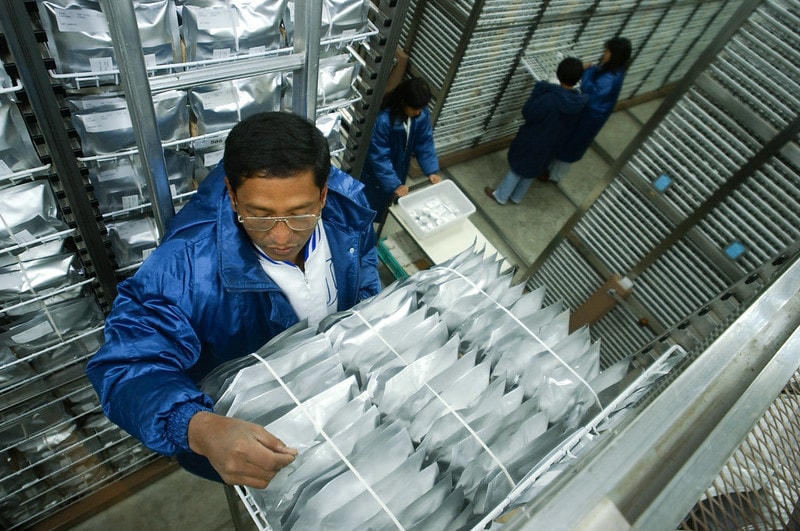The impact of the International Rice Genebank on rice farming in Bangladesh
- From
-
Published on
22.07.22
- Impact Area

The findings of this study demonstrate the valuable contribution of IRG’s conservation and distribution of genetic accessions to the development of improved rice varieties and rice production on farms in Bangladesh. The results can also be used to justify the continuity of collecting accessions and identify future potential sources of additional genetic acquisitions for varietal improvement.
Since the 1960s, Bangladesh has experienced significant rice productivity gains, achieved through yield improvements. The country’s ten-year average rice production (1961–1970 and 2010–2019) increased by 229% from 15.8 to 52 million metric tons, respectively. This was attained without significant increases in corresponding averages for area harvested, which only increased by 22% or 9.37 to 11.42 million ha, respectively. To date, Bangladesh is the world’s fourth-largest rice producer.
Bangladesh’s story was one of the successes of international agriculture research that spurred the Green Revolution in the 1960s, which helped avert food security challenges driven by population growth and stagnant productivity. However, the Green Revolution also increased the cultivation of rice varieties with similar genetic backgrounds, raising concerns for an impending crop diversity loss.
Related news
-

Empowering women in business through improved chicken in Tanzanian
Eisen Bernard Bernardo07.11.25-
Adaptation
-
Climate adaptation & mitigation
-
Gender equality, youth & social inclusion
-
Poverty reduction, livelihoods & jobs
In the coastal villages of Tanzania's Lindi region, where the sun warms the earth year-round,…
Read more -
-

From hard labor to higher profits: Tanzania’s smallholders win big through mechanized threshing power
The Alliance of Bioversity International and the International Center for Tropical Agriculture (CIAT)06.11.25-
Gender equality, youth & social inclusion
-
Nutrition, health & food security
For years, smallholder farmers across Tanzania toiled under the sun from dawn to dusk, their…
Read more -
-

Can monitoring emissions unlock the finance smallholder farmers need to adopt sustainable practices?
The Alliance of Bioversity International and the International Center for Tropical Agriculture (CIAT)05.11.25-
Climate adaptation & mitigation
-
Nutrition, health & food security
Millions of farmers need billions of dollars to adapt to the fast-changing climate and extreme…
Read more -
